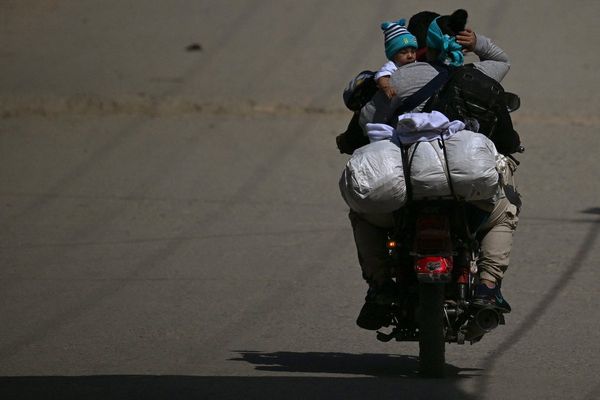
Flowers that haven't been seen in years bloomed across Southern California this spring after massive winter downpours, creating not only colorful landscapes but a boon for conservationists eager to gather desert seeds as an insurance policy against a hotter and drier future.
In the Mojave Desert, seeds from parish goldeneye and brittlebush are scooped up by staff and volunteers working to build out seed banks in the hope these can be used in restoration projects as climate change pressures desert landscapes. Already this summer, the York Fire burned across the Mojave National Preserve, charring thousands of acres in the fragile ecosystem including famed Joshua trees.
“This definitely highlights the importance of proactive seed banking as a fire management tool and how challenging it can be to keep up with the fire threats,” said Cody Hanford, joint executive director of the Mojave Desert Land Trust.
Wildfires across the West can be deadly and wreak havoc on local communities, with residents forced to evacuate and homes turned to ash. But they also can destroy large tracts of land and wildlife habitat in places such as the Mojave Desert, where they are becoming more commonplace due in part to the spread of invasive grasses prone to burning quickly, fueling flames, experts said.
Seeds long have been banked throughout the United States in a wide range of habitats. Initially, they were collected as a way to preserve rare and exotic plant species, but efforts now also focus on gathering from commonly-found plants that are increasingly in demand as climate change elevates the risk of wildfires and the growth of invasive species that can crowd out native vegetation.
Hanford said it's too soon to know what restoration might be needed in the Mojave National Preserve, where firefighters have largely contained the blaze. But fires like these encourage the land trust, which buys desert land for conservation, to expand its seed collection efforts, sending staff and volunteers out to gather seeds, clean and jar them for storage.
The process is manual and time-consuming. In Joshua Tree, California, volunteers head out on hiking trails when flowers are blooming to chart where plants are located and return to collect seeds when they are ready to harvest, said Madena Asbell, the land trust’s director of plant conservation programs.
The seeds are placed in paper bags or buckets, taken back and cleaned by hand or using an air-blowing device that removes chaff so they can be stored by the thousands in neatly labeled jars in refrigerators.
Asbell said her organization is ramping up collection thanks to grant funding and just as the rainy winter led plants like paper bag bush to bloom for the first time in years.
“2019 was the last wet year we had,” she said.
Seed banking efforts are underway across the country through a program aimed at putting seeds into long-term storage and using them for projects aimed at bolstering restoration. Funding for the federal Bureau of Land Management's program has increased in recent years, though demand for seeds to restore lands burned by wildfire or wildlife habitat far outstrips the supply, experts said.
In California, there are more than 4,000 seed collections through this program, representing more than 1,300 species of plants. That covers about a fifth of the state's known plant species, according to the agency.
“We have so much land to restore and not enough seeds to restore it all,” said Katie Heineman, vice president of science & conservation at the Center for Plant Conservation.
This year, however, presents a golden opportunity for seed banking in California due to winter storms that drenched the state, covered the mountains in snow and replenished rivers. The Chicago Botanic Garden, for example, has three times as many seed collectors in Western states this year as last, officials said.
More collections also are being made by Bureau of Land Management crews in the Mojave Desert region, the agency said.
One of the challenges in collecting seeds in this area is that it's so vast, and restoration is best achieved with plants from the same general location. Seeds previously collected by the land trust therefore won't necessarily be a fit for future restoration efforts after the York Fire, Hanford said.
While the need for restoration isn't unique to the West, the scale is much greater because of the size of the region's wildfires, said Kayri Havens, chief scientist at Chicago Botanic Garden.
“As our climate changes, places we thought in the past we wouldn’t have to restore, we’re finding out we have to restore," Havens said. "The Mojave Desert now burns. It was not a place that had wildfire problems 30 years ago."







